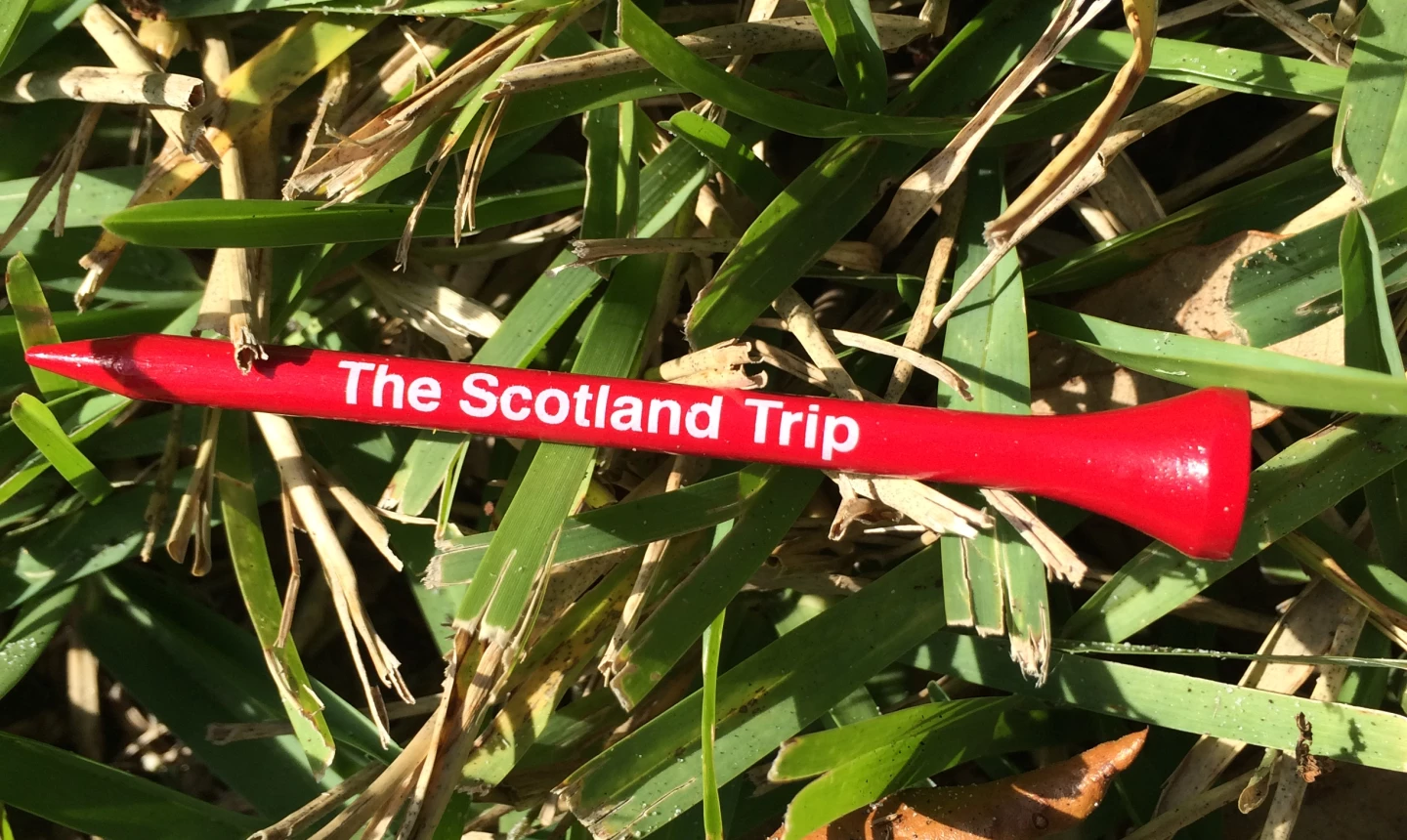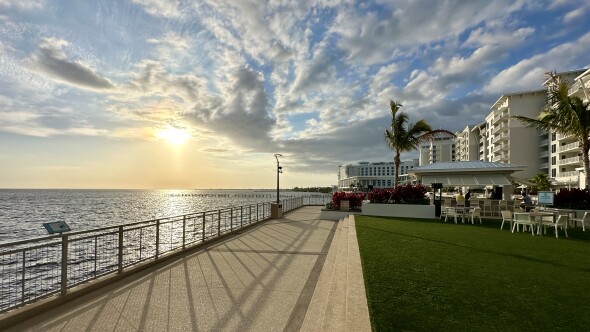Golf Channel's Mike Ritz, the lead voice for European Tour coverage, recently took three friends on a trip of a lifetime: six of the top links courses in Scotland in six days.
CARNOUSTIE, Scotland -- We saved the toughest for last.
Carnoustie Golf Links does not let you relax. Every shot from tee through green requires planning and execution. If you try to "hit and hope" here, your hopes will not be fulfilled.
In essence, you play each hole backward. Figure out first where you want your approach to finish, then where you need to hit your tee shot to give you a chance to fulfill your second-shot plan. Oh, and you may want to figure out how to best avoid all those bunkers, burns, heather and gorse with your tee ball.
Golf has been played over the links at Carnoustie since the 1500s. The present course came into being in 1850, when it was designed by golf's first professional, Alan Robertson of St. Andrews. Some 20 years later Old Tom Morris tweaked and extended the course to 18 holes and 4,565 yards.
The next touches came in 1926 from James Braid. The first Open Championship at Carnoustie was played in 1931, won by Tommy Armour. Prior to the 1937 Open, the final three holes were redesigned by a local man, James Wright, and he produced what has come to be regarded as the toughest finishing stretch in golf.
The 16th is a 250-yard par 3. In the third round of the 1968 Open, the hole was playing directly into the wind. Jack Nicklaus, who hit driver, was the only man in the field to hit the green in regulation.
In 1975, five-time Open champion Tom Watson failed to hit the 16th in regulation in all five rounds he played -- including during the Monday playoff win over Jack Newton. In fact, Watson made bogey all five times.
While you're laboring around one of our game's most demanding courses, you'll enjoy the history you're sharing with so many of the game's greats.
In 1953, Ben Hogan decided to travel to the U.K. for the first time to play in the Open Championship at Carnoustie. He won famously, thus completing the Hogan Triple Crown after triumphing at both the Masters and the U.S. Open that year. The PGA Championship and Open Championship dates overlapped that year, so winning all four majors was not possible.
Though the Scots adored the "Wee Ice Mon," he wasn't too keen on the course. It was his first, and last, appearance at The Open.
"I've got a lawn mower back in Texas, I'll send it over," Hogan said after winning.
Jack Nicklaus was also not enamored by Carnoustie at first. This is what he said in 1983: "When I first went to Carnoustie in 1967 to play a television match with Arnold (Palmer) and Gary (Player), I thought Carnoustie was the worst golf course I'd ever seen. And by the time I'd finished the Open in 1968, I thought it was the hardest golf course I'd ever seen (Nicklaus finished T-2 with Bob Charles, two shots back of Player's winning 289), but a darn good course, and I really had great respect for it. And the last time I went back in'75, I had even greater respect for it. Now Carnoustie is one my favorites."
The sixth at Carnoustie is a wonderful 570-yard par 5 and the home of the very first "Hogan's Alley." There is out of bounds all the way down the left side; and on the final day (two 18-hole rounds), Hogan decided the best position off the tee was between the OB left and the bunkers that normally guard the left side of the fairway. He started his drive left of the fence and cut it back into play, left of those bunkers. Actually, I should say "drives," plural. Because you see, as legend has it, in his second round that day his drive at No. 6 stopped right next to the divot hole where his first drive had ended up in his morning round.
Of course, when you play the 18th, keep in mind the 1999 finish of Jean Van de Velde and his painfully infamous triple bogey that cost him the claret jug. If you feel the urge, play the hole with just a 7-iron for your first two shots and see if you can make the double-bogey six that would have won Van de Velde the Open.
One member of my foursome accomplished something neither Van de Velde nor many Scotland visitors have done. Joe Wirth played his last three rounds in Scotland with just one ball each day. Yes, he played Royal Dornoch, Castle Stuart and Carnoustie without needing to replace his ball. Try to match that feat. If only Jean had been able to do that, he would have won a major.
As I began this recounting of our trip, I implored all of you to make sure you make your own golf pilgrimage to Scotland. I will tell you, there was nothing quite like completing our round at the Old Course and then sharing a hug with my close pal, Paul -- a dear friend with whom I had first played golf at the age of 10.
I had persevered for so long to get him to St. Andrews; and as we stood there on the 18th green at the birthplace of the game that brought us together, the first word uttered was "Incredible."
The rest of Mike Ritz's trip:
Read about Day 1 of Ritz's Scotland golf trip at North Berwick's West Links in St. Andrews
Read about Day 2 of Ritz's Scotland golf trip at the Old Course in St. Andrews
Read about Day 3 of Ritz's Scotland golf trip at Kingsbarns Golf Links
Read about Day 4 of Ritz's Scotland golf trip at Royal Dornoch
Read about Day 5 of Ritz's Scotland golf trip at Castle Stuart













